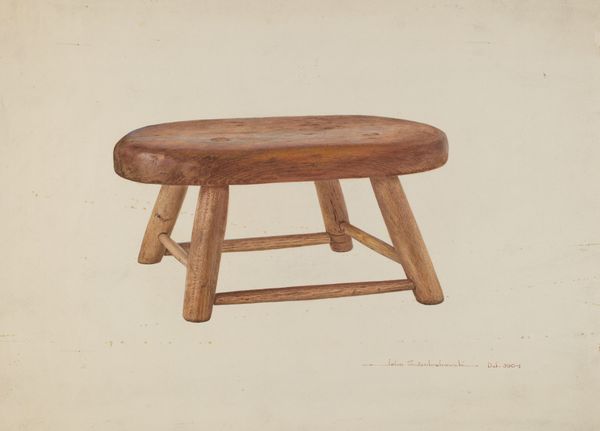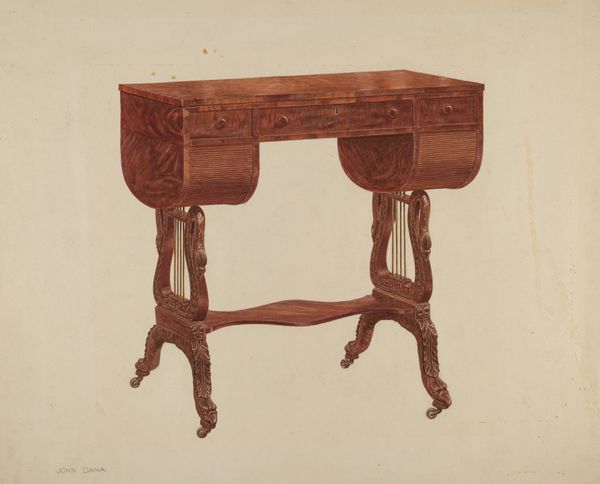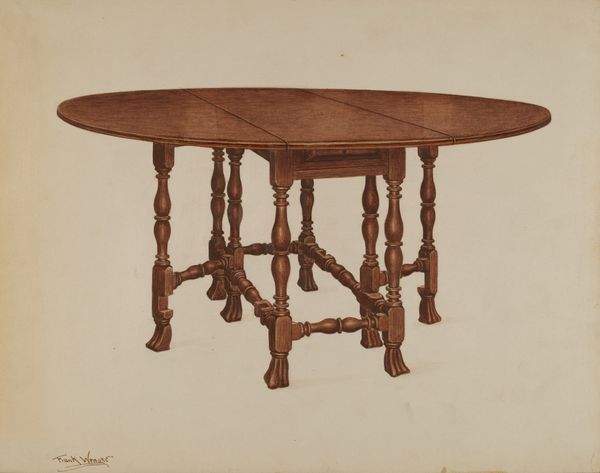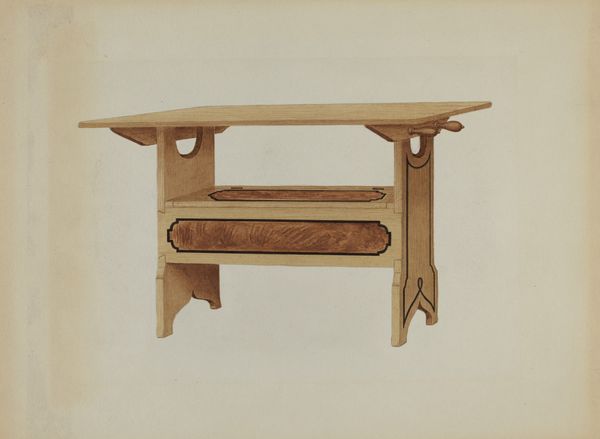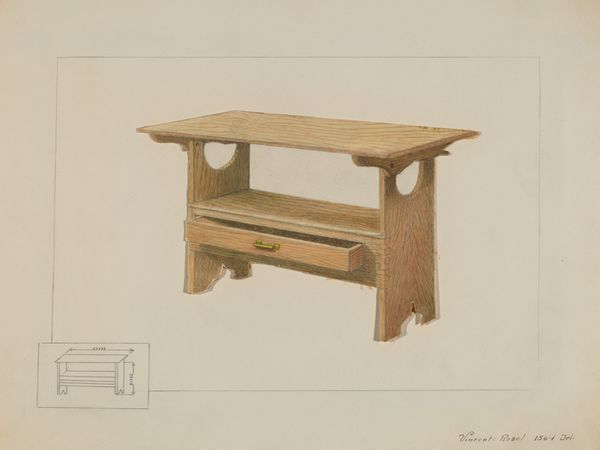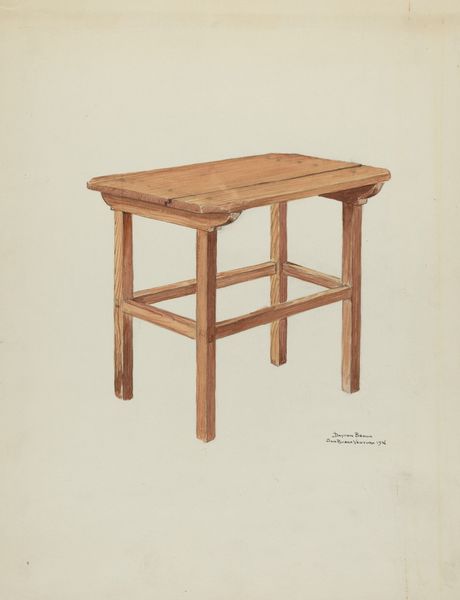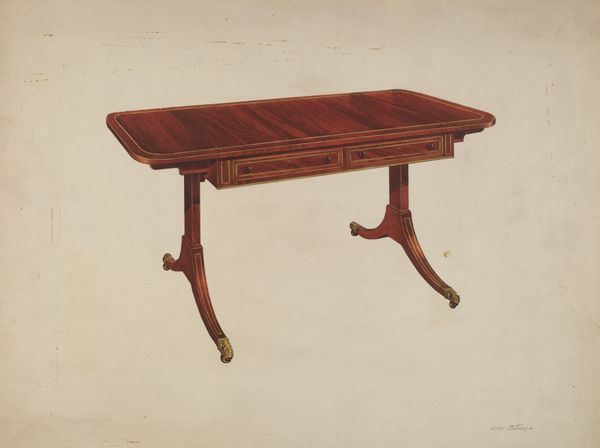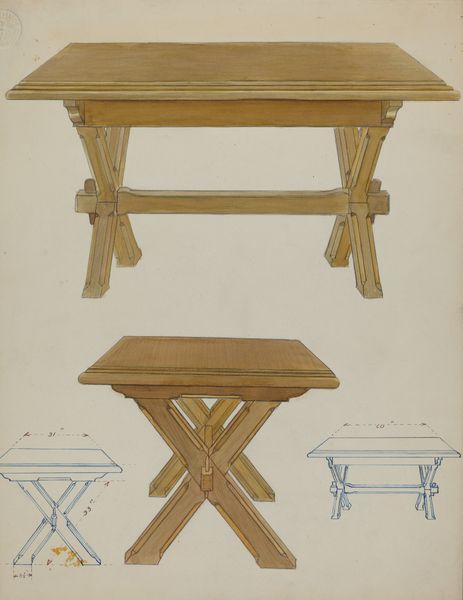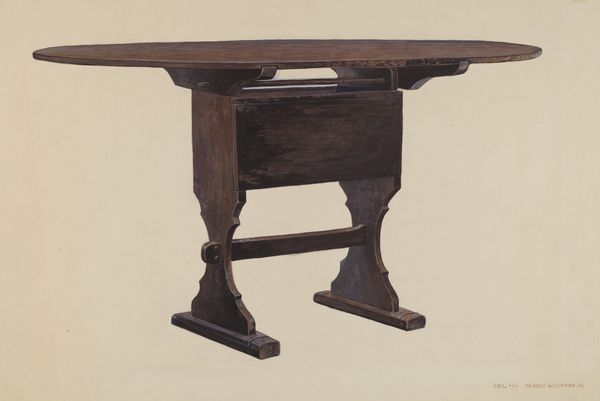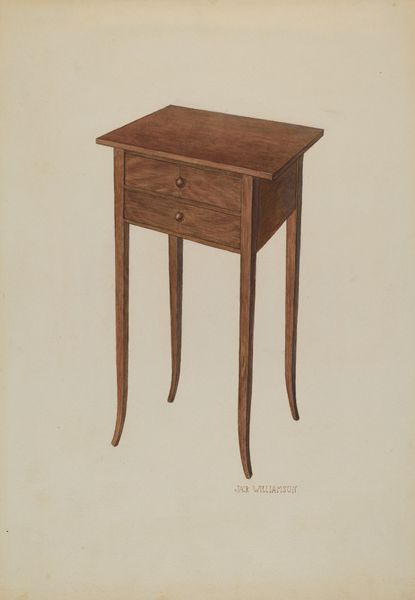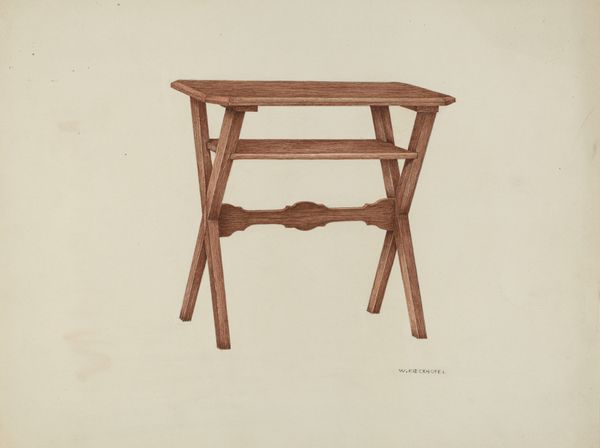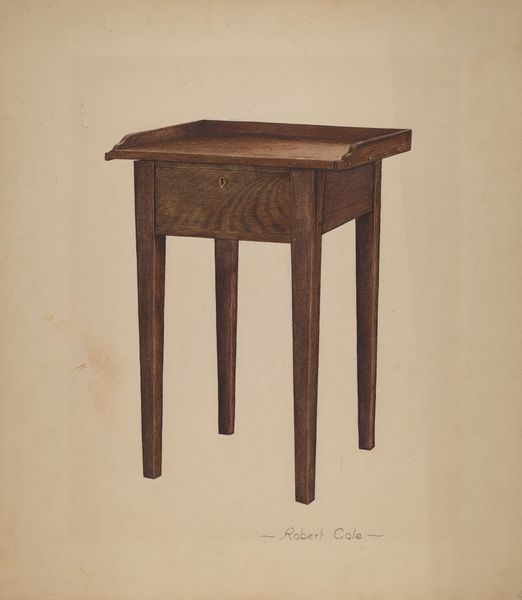
drawing, pencil, wood, charcoal
#
drawing
#
charcoal drawing
#
oil painting
#
pencil drawing
#
folk-art
#
pencil
#
wood
#
charcoal
#
charcoal
#
watercolor
Dimensions: overall: 27.6 x 35.7 cm (10 7/8 x 14 1/16 in.) Original IAD Object: none given
Copyright: National Gallery of Art: CC0 1.0
Curator: I find myself immediately drawn to the humble elegance of this piece. There’s an almost meditative quality to the rendering of a common, everyday object. Editor: Right? My first thought was how beautifully ordinary it is. The muted tones, the way the light falls… It makes me want to reach out and touch the wood. It feels worn, loved, like it’s got stories to tell. Curator: Absolutely. What we’re looking at is a drawing titled "Cricket (Foot Stool)", believed to have been created around 1941. It appears to utilize charcoal and pencil. These foot stools, often called crickets, were commonplace in homes, especially in rural communities, offering a place to rest or simply elevate one’s feet. The name is probably derived from their low stature like the insect, Editor: It's kind of funny how something so functional can be so visually appealing, don’t you think? I love the heart shapes cut into the legs. They give it a whimsical touch, a bit of personality you wouldn’t necessarily expect. It elevates it from a purely practical object, don’t you think? Curator: Indeed. The inclusion of those folk art motifs suggests a deeper connection to vernacular traditions and perhaps even an attempt to imbue the object with sentimental value, challenging conventional expectations for objects relegated to the domestic sphere. Consider its original context and maker, their likely class and gender, and the statement this simple rendering makes by virtue of existing. Editor: Okay, professor. But there’s something about the simplicity too, though. It's not trying to be anything it isn't, you know? It's just a footstool, unapologetically so. And the artist isn’t trying to be showy with technique. The medium echoes the subject matter, wood into rendering wood with charcoal. It all creates something that’s quiet, authentic, grounded, maybe like an earthy person with both feet on solid ground! Curator: A powerful interpretation! It speaks to the way seemingly trivial or conventional aspects can reflect deeper cultural narratives about identity, labor, and the socio-political power dynamics embedded in artistic representation. Editor: Well said. Seeing something so functional framed as art prompts a similar question. Like what does “art” even mean and is some definition actually quite pretentious when you see things like this rendered with such sincerity. The longer I look, the more beauty I see in that humbleness. Curator: Exactly, and perhaps its ability to subtly prompt those very questions constitutes one dimension of its enduring relevance. Editor: Precisely. It really gets under your skin in unexpected ways, doesn't it?
Comments
No comments
Be the first to comment and join the conversation on the ultimate creative platform.
